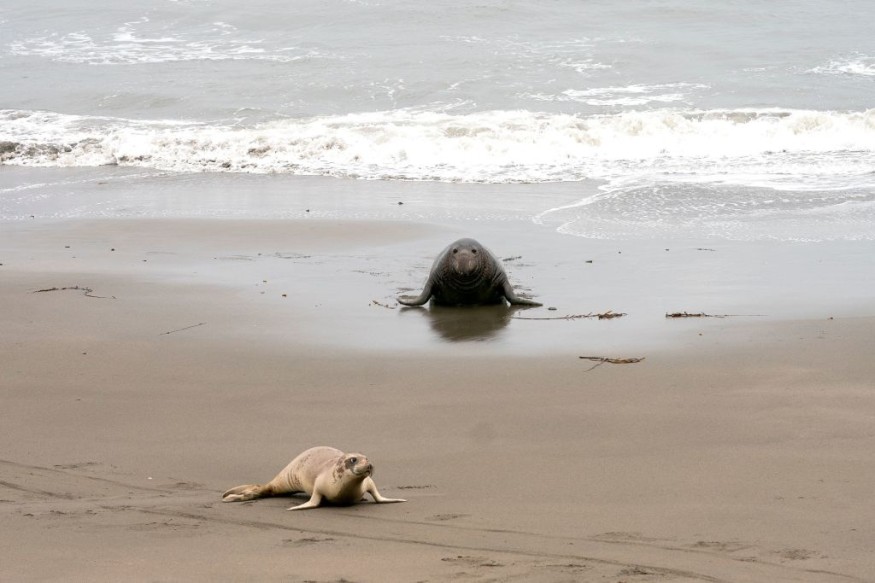
Despite repeated warnings, a diver continues to stroke and pet a sea lion pup, alarming officials. Reminders on how visitors should behave near seal and sea lion pups are frequently given by both wildlife officials and conservationists.
Man caught on camera petting sea lion pup in La Jolla https://t.co/UwhEoienLT via @CBS8
— Black Gloves Lady (@BlackGlovesLady) June 13, 2023
Disturbing a Sea Lion Pup
Concerns among conservationists have been raised by a video showing a diver petting a young sea lion on a Californian beach.
A man was spotted squatting down next to a sea lion pup at San Diego's La Jolla beach and patting the animal. He can hear the coast guard telling him to get away from the sea lion in the distance but ignores them.
Both harbor seals and California sea lions are indigenous to the west coast of North America, and both species have made La Jolla their nesting grounds. Around 100 seals and 150 to 200 sea lions, with seasonal peaks, are present.
Effects on Wildlife
Marine mammals are looking for a place to recuperate and replenish their energy when they are not in the water, according to the CEO of the Marine Mammal Care Center, John Warner. People's interactions with the pup may cause stress, which can impair their immune systems or cause mother seals or sea lions to flee from pups or tumble off cliffs.
Moving away from people can lead to the animals wasting valuable energy reserves and upsetting the newborn pups' necessary feeding regimens. Every pup's feeding is timed by its mother to ensure that it receives all the calories and nutrients it needs to give it the best chance of survival, according to Sue Sayer of the Seal Research Trust in the UK.
According to Carol Toye of the Sierra Club Seal Society in San Diego, a mother's attachment with her pup may be broken by people approaching or touching it, which may cause the mother to abandon it.
Effects on Humans
The risk of handling wild animals extends to people. According to Warner, animals may harbor a variety of pathogens and germs that can cause life-threatening illnesses. When provoked, wildlife is also more prone to bite or act unfavorably against humans.
Visitor Decorum and Some Reminders
This part of La Jolla is a popular destination for tourists from all over the world, yet it is also an urban setting where it is challenging to effectively manage human-animal relations, Newsweek reports.
The Marine Mammal Protection Act, a federal statute, protects sea lions and seals in the United States by outlawing harassment of the creatures, according to NOAA Fisheries.
Nursing and feeding occur in distinct areas for California sea lions. A mother sea lion will nurse her young for one to two days before leaving it on land to accompany her to feeding grounds at sea. She feeds for two to five days, then comes back to nurse. The pup doesn't eat when the mother isn't there. Until they wean their pups, females maintain a cycle of spending several days at sea and several days nursing on land. Sea lions and seal pups on the shore should not be approached, NOAA Fisheries reported.
Mother harbor seals stay close to their young because they prefer familiar surroundings. Lone puppies take a nap on the sand, control their body temperatures, and learn how to get by without feeding. Some individuals won't survive since it's risky and difficult. Leaving puppies alone gives them the best opportunity. Mothers stay away from people and animals, coming back at night to nurse.
Officials advise that for 24 hours, keep 100 yards away from seal pups on the beach before determining whether they are stranded. Interaction with people or animals results in hunger and abandonment. Zoonotic illnesses are contagious, as well, making interactions with pets also ill-advised. Aggression, harm, or even death can result from feeding seals.
Also, seals are more susceptible to boats due to increased human interaction. If the pup is unable to return, it may experience distress, according to the Coastal Interpretive Center.
Related Article : Newborn Bison Calf Euthanized After Interaction with Yellowstone National Park Visitor
© 2025 NatureWorldNews.com All rights reserved. Do not reproduce without permission.





